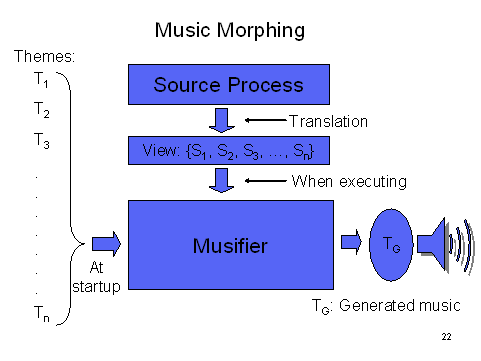The principle of music morphing can be seen from two angles. It can be seen as the gradual transition between musical gestalts. And it can also be seen as the musical interpretation of processes. The principle is not limited to morphing between two themes only. Top centre in the graphics below is a source process that can be any observable process, for example the changing states of a computer game as it is being played on a computer. As the source process evolves a translation is continuously made into a state vector or view with n positive dynamic weights, S1, ..., Sn. At the left is a list of n musical themes, T1, ..., Tn. At startup Ti is linked to Si for 1 ≤ i ≤ n. When the system executes, the dynamic weights in the view continuously monitor the source process and the musifier generates music using material from the themes so that material from themes linked to heavier weights are used more than material from themes linked to lighter weights. To this can be added a criterion of convergence: When the view moves into an edge such that View = {0, 0, 0, ..., Sk, ..., 0, 0, 0}, Sk > 0, the generated music will converge to Tk. If the source process would be a computer game the translation would most conveniently be performed by a software layer between the game and the Musifier.


